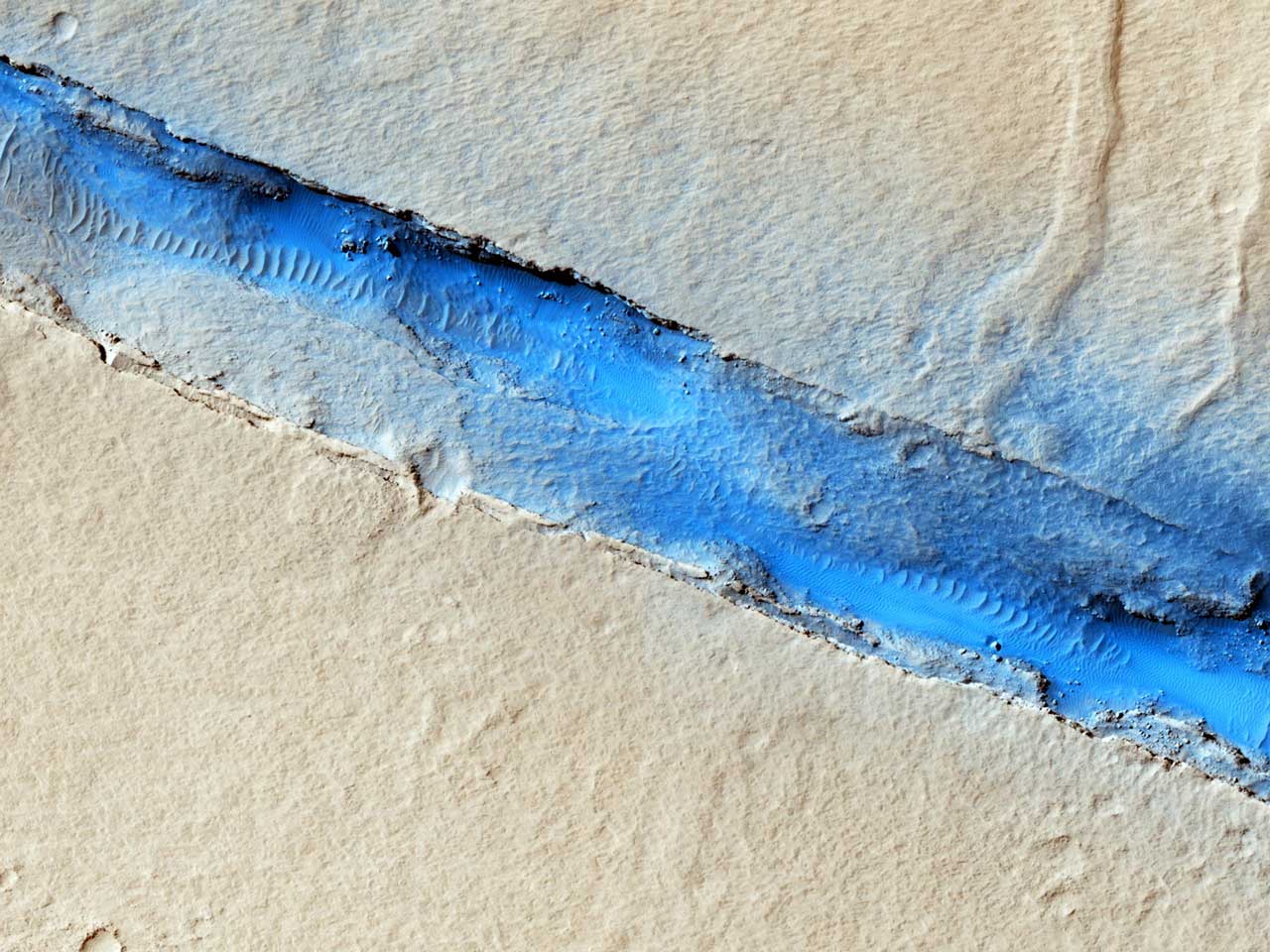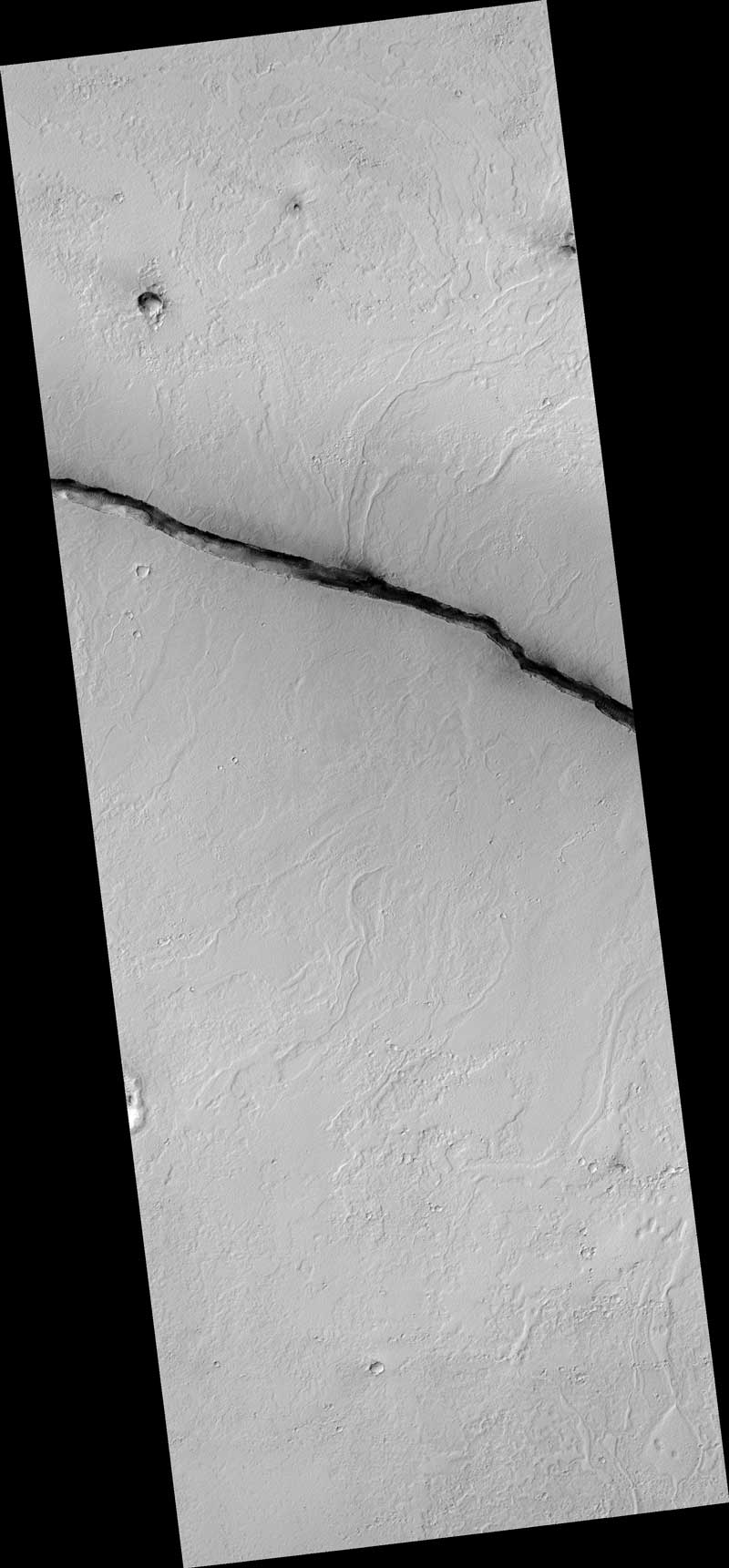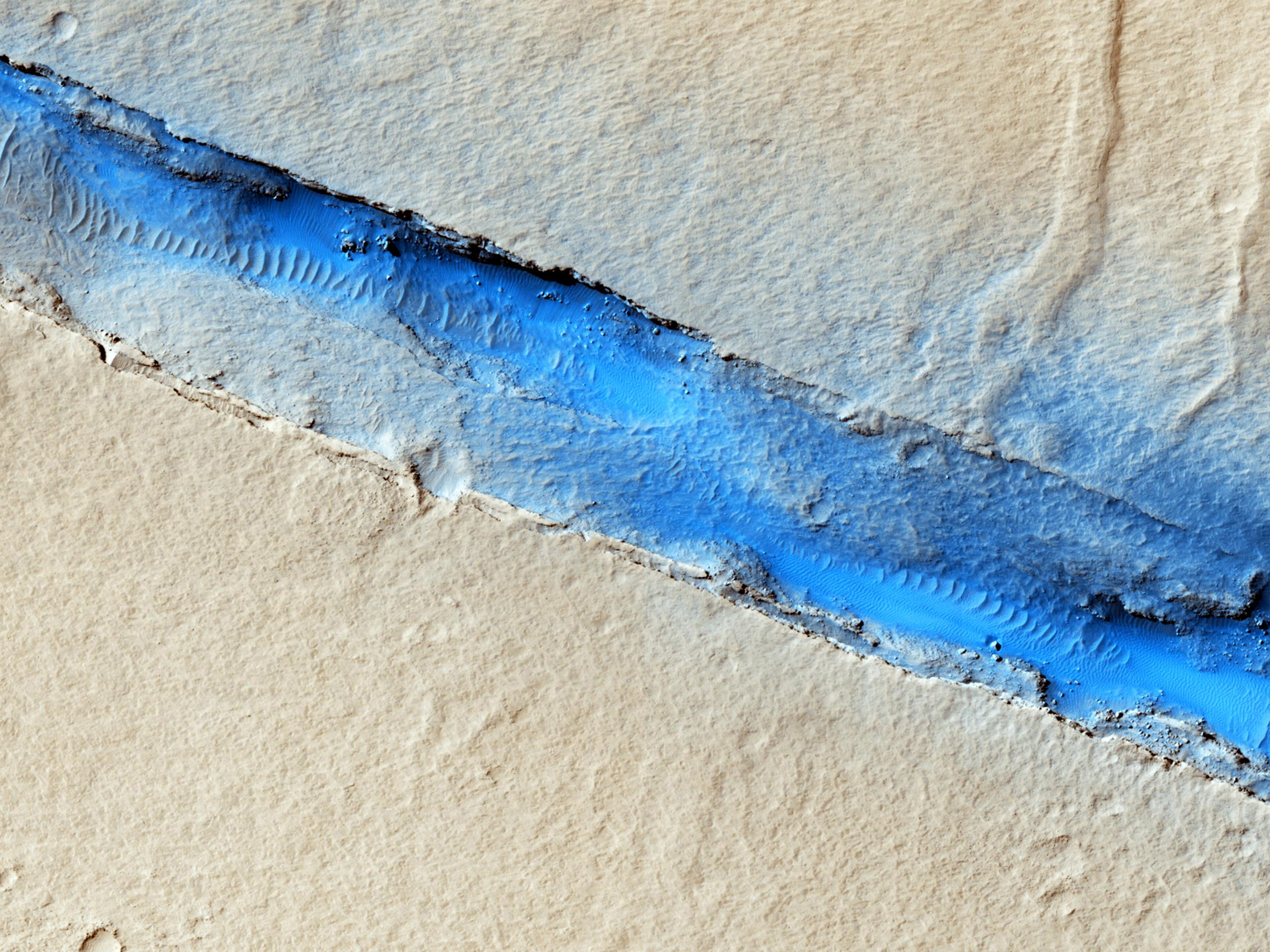Fissure near Cerberus Fossae with Tectonic Morphologies

| Credit | NASA/JPL-Caltech/Univ. of Arizona |
|---|---|
| Language |
|

The linearity of the volcanic vent shown in this HiRISE image, in conjunction with evidence of lava flow from the vent, suggests control by combined volcano-tectonic processes. The details of this vent gained by HiRISE should provide insight into those volcano-tectonic processes along Cerberus Fossae fissures in two ways.
The nature of both the volcanic products along this fissure, and the geometries of the linear vent, will permit comparison with similar, non-volcanic fissures at Cerberus. And results from these comparisons will provide insight into the orientation of the underlying dike system that may have controlled the ascent of water to the surface in the Cerberus region.
Future topographic analysis with a second image in order to create a 3D picture will enable us to measure the heights of the associated flows and better understand their volcanic history.
HiRISE is one of six instruments on NASA's Mars Reconnaissance Orbiter. The University of Arizona, Tucson, operates the orbiter's HiRISE camera, which was built by Ball Aerospace & Technologies Corp., Boulder, Colo. NASA's Jet Propulsion Laboratory, a division of the California Institute of Technology in Pasadena, manages the Mars Reconnaissance Orbiter Project for the NASA Science Mission Directorate, Washington.


